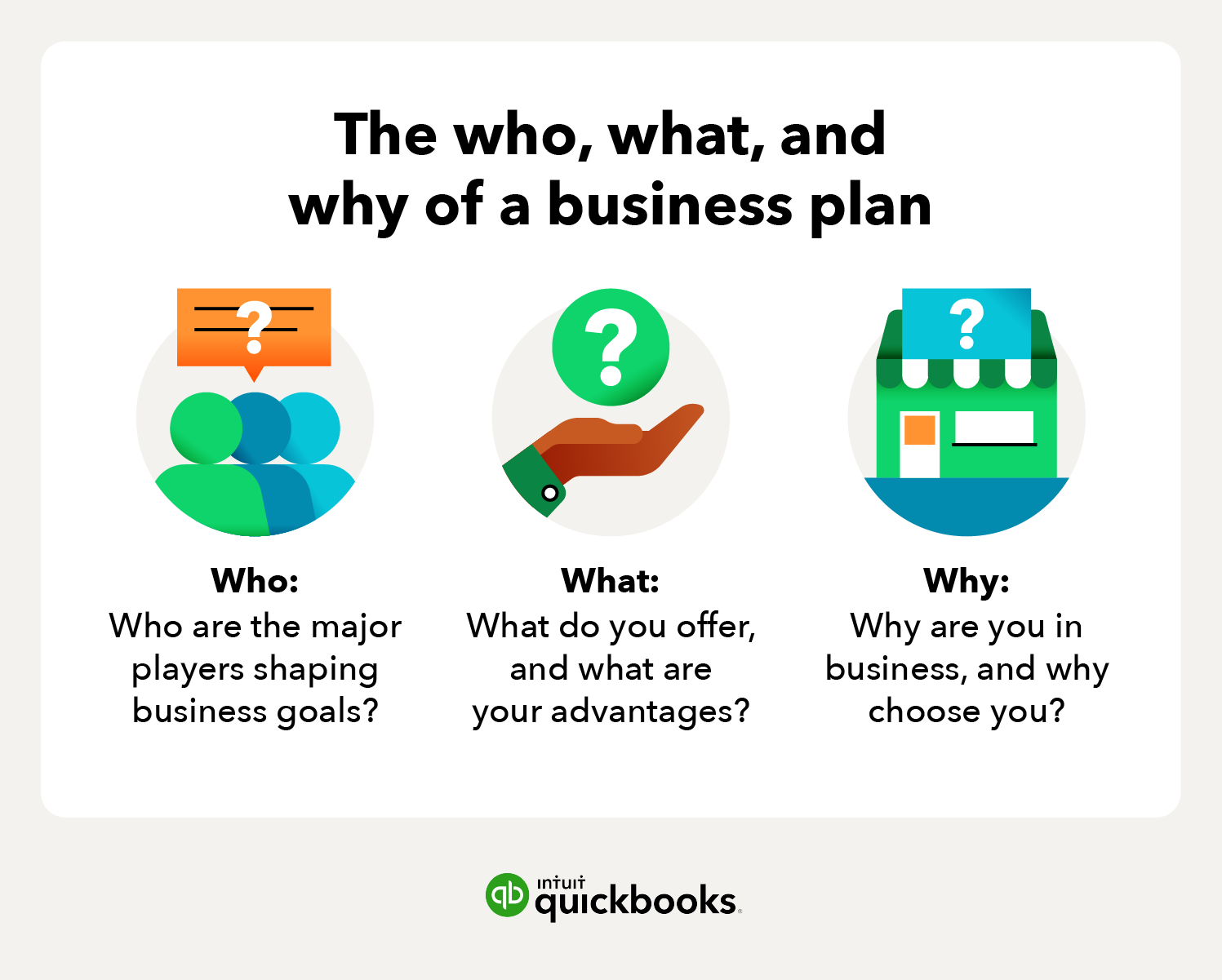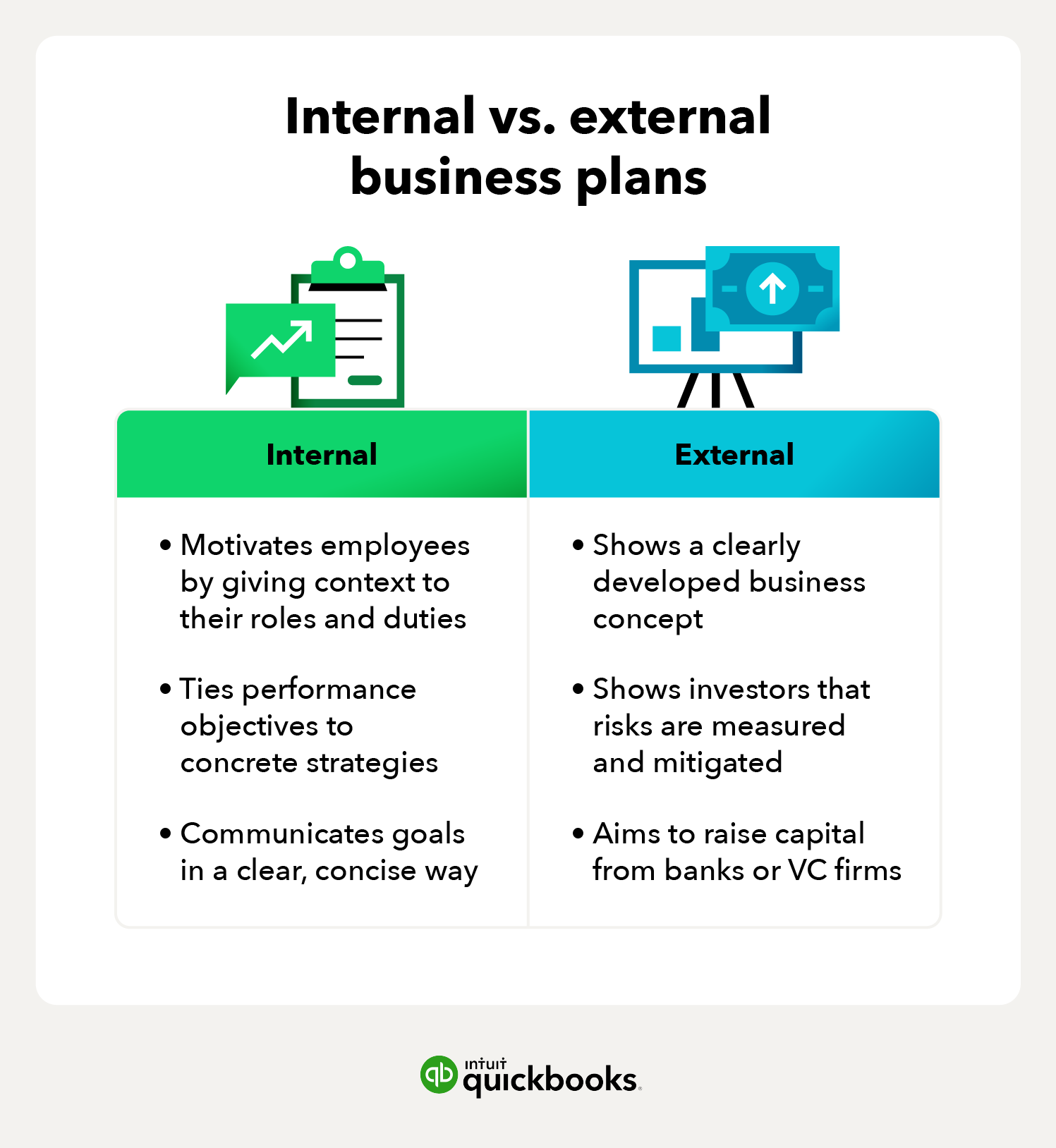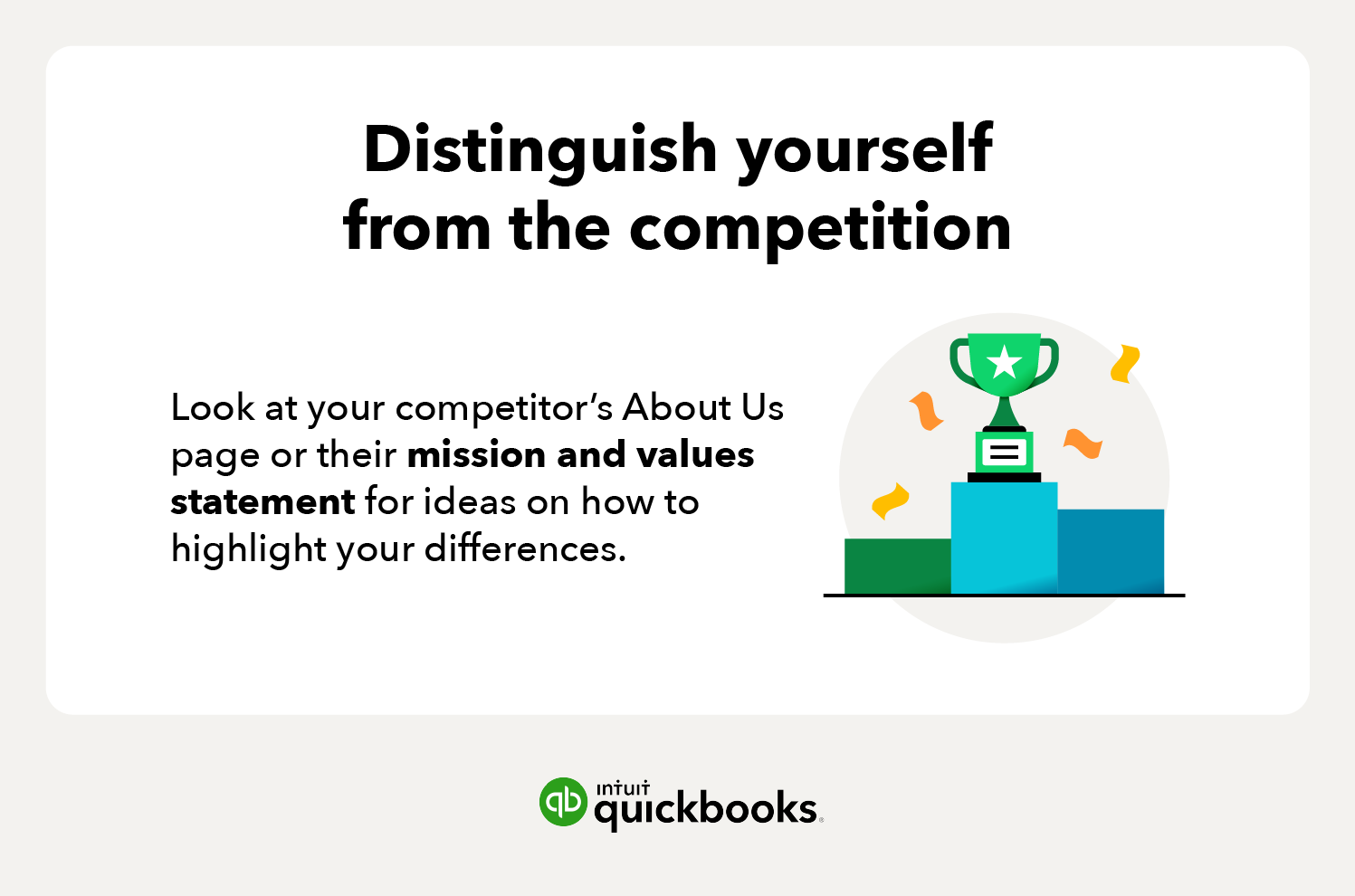2. Compose your company description
Within a business plan, your company description contains three elements:
- Mission statement
- History
- Objectives
These elements give context to the bigger picture in your business plan, letting investors know the purpose behind your company so the goals make sense as well.
What is a mission statement?
A mission statement is your business’s reason for existing. It’s more than what you do or what you sell, it’s about why exactly you do what you do.
Effective mission statements should be:
- Inspirational to make others believe in your vision
- Emotional to captivate readers and grab their interest
It is important to know that throughout every part of your plan, less is more. Nowhere is that truer than your mission statement. Think about what motivates you, what causes and experiences led you to start the business, the problems you aim to solve, the wider social issues you care about, and much more.
Tip: Review your mission statement often to make sure it matches your company’s purpose as it evolves with time. A statement that doesn’t fit your core values or what you actually do can undermine your marketing efforts and credibility.
How do you describe a company’s history?
Don’t worry about making your company history a dense narrative. Instead, write it like you would a profile:
- Founding date
- Major milestones
- Location(s)
- Number of employees
- Executive leadership roles
- Flagship products or services
Then, translate that list into a few short paragraphs (like the example below).
Why do business objectives matter?
Business objectives give you clear goals to focus on, like the North Star. These goals must be SMART, which stands for:
- Specific
- Measurable
- Achievable
- Realistic
- Time-bound
They must also be tied to key results. When your objectives aren’t clearly defined, it’s hard for employees and team members to work toward a common purpose. What’s worse, fuzzy goals won’t inspire confidence from investors, nor will they have a profitable impact on your business.
Example of a company description
Laura’s Landscapers’ mission is to change the face of our city through sustainable landscaping and help you create the outdoor living space of your dreams.
Founded in 2021 by sisters Laura and Raquel Smith, we have over 25 years of combined landscape architecture experience. Our four employees work in teams of two and have already completed 10 projects for some of most influential business and community leaders.
Our objectives over the next three years are to:
- Solidify a glowing reputation as a service-based business that always exceeds customers’ expectations and honours the environment
- Complete at least 18 projects during year one, 24 in year two, and 36 in year three generated through word of mouth, referrals, and home shows
- Increase revenue from $360,000 in FY2021 to $972,000 in FY2023 based upon 10 completed projects in the last nine months
3. Summarise market research and potential
The next step is to outline your ideal potential customer as well as the actual and potential size of the targeted market. Target markets—also known as personas—identify demographic information like:
- Location
- Income
- Age
- Gender
- Education
- Profession
- Hobbies
By getting specific, you’ll illustrate expertise and generate confidence. If your target market is too broad, it can be a red flag for investors.
- Example: If your product is perfect for people with money to hire landscape architects, listing 'anyone with a garden' as your target market might not go over so well.
The same is true with your market analysis when you estimate its size and monetary value. In addition to big numbers that encompass the total market, drill down into your business’s addressable market—meaning, local numbers or numbers that apply the grand total to your specific segments. You may even map your customer’s journey to get a better understanding of their wants and needs.
Example of market research and potential
Laura’s Landscapers’ ideal customer is a wealthy baby boomer, a member of Gen X, or a millennial between the ages of 35 and 65 with a high disposable income. He or she—though primarily, she—is a homeowner. They're working professionals or have recently retired. In love with the outdoors, they want to enjoy the beauty and serenity of nature in their own backyard, but don’t have the time or skill to do it for themselves.
Market research shows the opportunity for Laura’s Landscapers has never been better:
- The total revenue for landscaping services increased from $69.8 billion in 2013 to $99 billion in 2019. (1)
- Among landscaping contractors, designing and building is the second-fastest growing service offering. (2)
- What’s more, landscape design and construction is the number one “new service” existing companies plan to add over the next year. (3)
Globally, leading indicators for interest in green, eco-friendly, and sustainable landscaping have all increased exponentially over the last five years:
- Online search volume for those terms is up 467%
- 10 new community organisations have been formed
- 73 high-profile projects have been covered by local media
- And currently 13% of residents in the area have a household income of $125,000 or more








